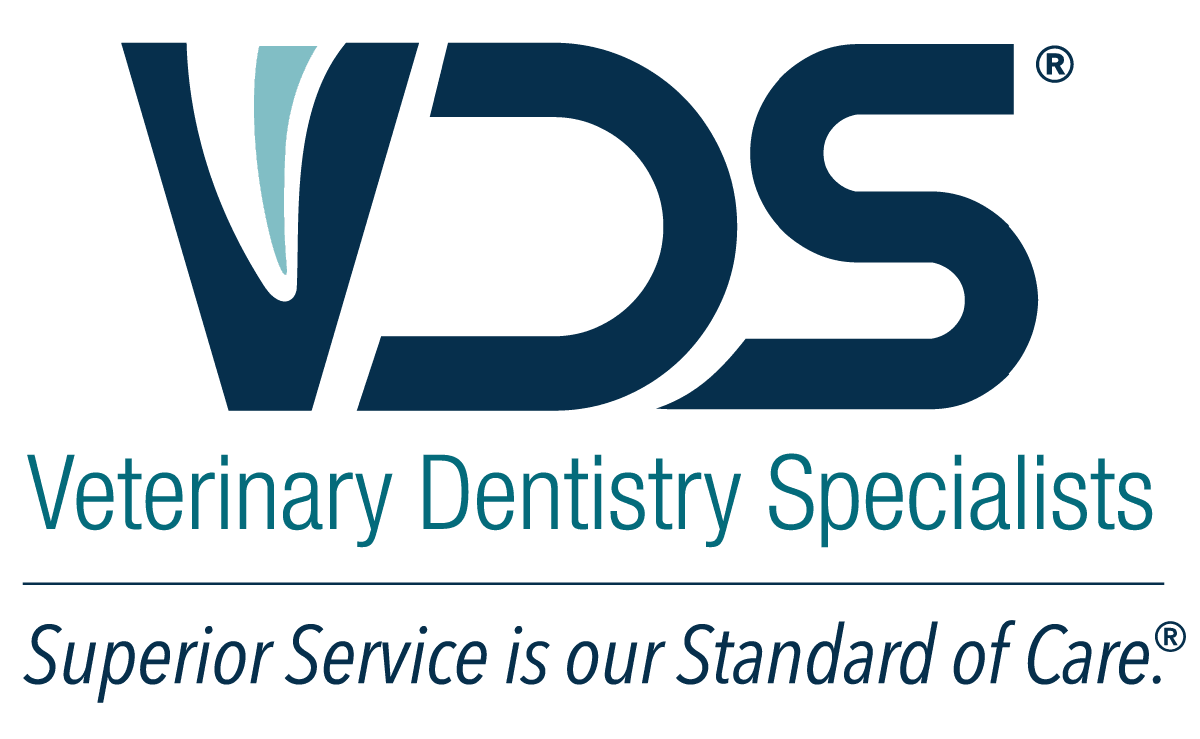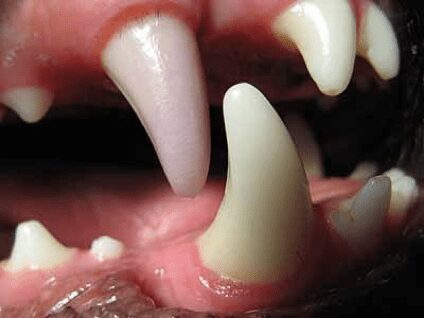Regular visual inspection of your pet’s mouth and teeth is an important part of your pet’s home dental care routine. If you notice that one or more of their teeth is an abnormal color, it is essential to discuss this change with your primary care veterinarian or board-certified veterinary dentist (a specialist). Discolored teeth can be a sign of oral problems and should be addressed promptly to prevent complications.
What Causes Discolored Teeth?
Discolored teeth most often occur when the tooth is no longer vital, meaning that the pulp inside the tooth has died. This can occur due to trauma, fractures, or certain conditions that affect the development of dentin or enamel. A discolored tooth can be a source of pain or infection, so addressing the non-vital tooth as soon as possible is recommended.
A discolored tooth may be difficult to spot, especially if your pet doesn’t like having their mouth handled or inspected. Healthy teeth should be white to off-white, though you may notice some yellow or brown buildup along the gum line if your pet has an accumulation of dental tartar. Discolored teeth will often appear gray, dark brown, pink, or purple.
How Are Non-Vital Teeth Treated?
Non-vital teeth (a dead tooth) can be treated via surgical extraction or by using endodontics (root canal therapy). Both procedures are performed under general anesthesia by your primary care veterinarian or a board-certified veterinary dentist, ensuring that your pet remains safe and comfortable throughout the procedure. Your veterinarian will first examine your pet’s entire oral cavity, assessing the health of each tooth and identifying any areas of concern. Next, full mouth intra-oral radiographs (X-rays) will be performed, which help identify disease below the gum line and assess the vitality of any discolored teeth. Determining the underlying cause is essential. They will then discuss treatment options with you based on their assessment.
The most common treatment for non-vital teeth is surgical extraction; that is, removal of the dead tooth and its associated structures. This procedure is performed under general anesthesia with appropriate pain control, so your pet will not experience any distress. While it may be difficult to think about your pet losing a tooth, most pets recover without any complications and can return to eating their normal diet within 1–2 weeks. Because a non-vital tooth can often be a source of pain, your pet will likely feel much better after the affected tooth has been removed!
The other option is root canal therapy. This procedure involves removing the dead pulp inside the tooth, then filling the hollow area with a material to prevent infection. Root canal therapy is less invasive than surgical extraction, allowing the patient to keep the affected tooth. However, not every patient is a candidate for root canal therapy, and much depends on the results of intra-oral radiographs. Your veterinarian may recommend surgical extraction instead if root canal therapy is not likely to be successful.
Should I See a Board-Certified Veterinary Dentist for Treatment of Non-Vital Teeth?
Referral to a board-certified veterinary dentist for further treatment is always recommended. At Veterinary Dentistry Specialists, our highly trained, board-certified veterinary dentists can perform a comprehensive full-mouth assessment of your pet and provide the best possible care for your pet’s oral health. Veterinary endodontics is not commonly performed by general practice veterinarians, so referral to a specialist is recommended to see if this option is right.
What Happens if I Don’t Treat a Non-Vital Tooth?
Non-vital teeth have a necrotic pulp, meaning that the tissue inside the tooth is decaying. This can lead to serious infection of the tooth, which can spread systemically via the bloodstream to essential organs such as the kidneys and the heart. The non-vital tooth is also often painful for your pet, even if they continue to eat normally and do not show any symptoms of pain. Treating the non-vital tooth as soon as possible reduces the risk of infection and ensures that your pet maintains a healthy, pain-free mouth – an important component of good quality of life!
Discuss Discolored Teeth with Your Veterinarian
Any time you notice an abnormal or discolored tooth in your pet’s mouth, it is important to discuss this change with your primary care veterinarian. They may recommend referral to a specialist to determine the best course of treatment and ensure that your pet’s entire mouth remains healthy and pain-free.






